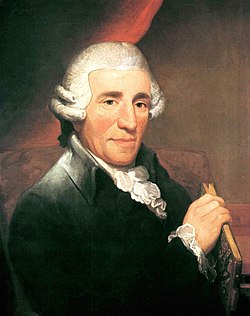
Joseph Haydn's Symphony No. 17 in F major, Hoboken I/17, may have been written between 1757 and 1763. [1]
It is scored for 2 oboes, bassoon, 2 French horns, strings and continuo. [2] It is in three movements:

Joseph Haydn's Symphony No. 17 in F major, Hoboken I/17, may have been written between 1757 and 1763. [1]
It is scored for 2 oboes, bassoon, 2 French horns, strings and continuo. [2] It is in three movements: